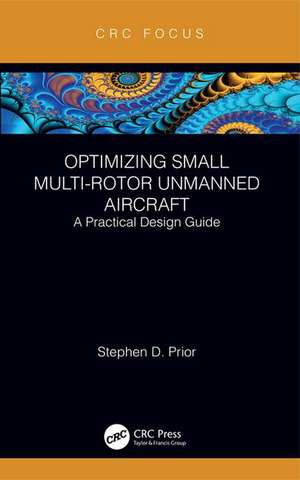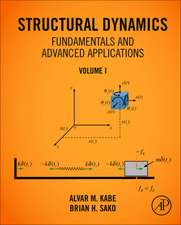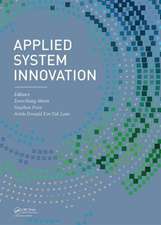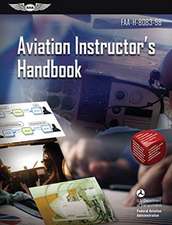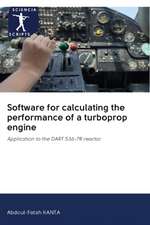Optimizing Small Multi-Rotor Unmanned Aircraft: A Practical Design Guide
Autor Stephen Prioren Limba Engleză Hardback – 4 oct 2018
Preț: 430.70 lei
Preț vechi: 468.15 lei
-8% Nou
Puncte Express: 646
Preț estimativ în valută:
82.42€ • 89.50$ • 69.24£
82.42€ • 89.50$ • 69.24£
Carte disponibilă
Livrare economică 01-15 aprilie
Livrare express 15-21 martie pentru 25.54 lei
Preluare comenzi: 021 569.72.76
Specificații
ISBN-13: 9781138369887
ISBN-10: 1138369888
Pagini: 146
Dimensiuni: 138 x 216 x 15 mm
Greutate: 0.3 kg
Ediția:1
Editura: CRC Press
Colecția CRC Press
ISBN-10: 1138369888
Pagini: 146
Dimensiuni: 138 x 216 x 15 mm
Greutate: 0.3 kg
Ediția:1
Editura: CRC Press
Colecția CRC Press
Public țintă
Postgraduate and ProfessionalCuprins
1. Introduction
2. Lithium-Polymer Battery (Power Supply)
3. Electronic Speed Controller (ESC)
4. Brushless DC (BLDC) Motor (Outrunner)
5. The Propeller (Rotor)
6. The System Solution
7. Conclusions
2. Lithium-Polymer Battery (Power Supply)
3. Electronic Speed Controller (ESC)
4. Brushless DC (BLDC) Motor (Outrunner)
5. The Propeller (Rotor)
6. The System Solution
7. Conclusions
Notă biografică
Dr Stephen D Prior is Reader in Unmanned Air Vehicles within the Faculty of Engineering and the Environment at the University of Southampton. He gained a BEng in Mechanical Engineering degree in 1987 and PhD in Robotics from Middlesex University, London in 1993. He is a Chartered Mechanical Engineer, Corporate Member of the IMechE and Fellow of the Higher Education Academy. His research interests are in the areas of Mechatronics, Autonomous Unmanned Systems, Robotics and Design Engineering. He was Project Lead for the MoD Grand Challenge i-Spy team in 2008 and was the Team Leader for Team HALO, winner of the DARPA UAVForge Competition 2012. He has been an editor for the International Journal of Micro Air Vehicles since 2010.
Descriere
This design guide was written to capture the author’s practical experience of designing, building and testing multi-rotor drone systems over the past decade. The lack of one single source of useful information meant that the past 10 years has been a steep learning curve, a lot of self-tuition and many trial and error tests. Lessons learnt the hard way are not always the best way to learn. This book will be useful for the amateur drone pilot who wants to build their own system from first principles, as well as the academic researcher investigating novel design concepts and future drone applications.
